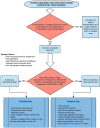Is Surgical Tracheostomy Better Than Percutaneous Tracheostomy in COVID-19-Positive Patients?
- PMID: 32925315
- PMCID: PMC7340220
- DOI: 10.1213/ANE.0000000000005100
Is Surgical Tracheostomy Better Than Percutaneous Tracheostomy in COVID-19-Positive Patients?
Conflict of interest statement
The authors declare no conflicts of interest.
Figures


Comment in
-
Is Surgical Tracheostomy Better Than Percutaneous Tracheostomy in Coronavirus Disease 2019-Positive Patients?Anesth Analg. 2021 Apr 1;132(4):e58. doi: 10.1213/ANE.0000000000005376. Anesth Analg. 2021. PMID: 33323784 No abstract available.
-
In Response.Anesth Analg. 2021 Apr 1;132(4):e58-e59. doi: 10.1213/ANE.0000000000005377. Anesth Analg. 2021. PMID: 33323788 No abstract available.
-
Keeping an Open Mind: Tracheostomy for Patients With Coronavirus Disease 2019.Anesth Analg. 2021 May 1;132(5):e90-e92. doi: 10.1213/ANE.0000000000005419. Anesth Analg. 2021. PMID: 33428341 No abstract available.
-
In Response.Anesth Analg. 2021 May 1;132(5):e92-e93. doi: 10.1213/ANE.0000000000005420. Anesth Analg. 2021. PMID: 33428342 No abstract available.
References
-
- Freeman BD, Isabella K, Lin N, Buchman TG. A meta-analysis of prospective trials comparing percutaneous and surgical tracheostomy in critically ill patients. Chest. 2000;118:1412–1418. - PubMed
-
- Anderson JD, Rabinovici R, Frankel HL. Percutaneous dilational tracheostomy vs. open tracheostomy. Chest. 2001;120:1423–1424. - PubMed
-
- Klotz R, Probst P, Deininger M, et al. Percutaneous versus surgical strategy for tracheostomy: a systematic review and meta-analysis of perioperative and postoperative complications. Langenbecks Arch Surg. 2018;403:137–149. - PubMed
Publication types
MeSH terms
LinkOut - more resources
Full Text Sources

